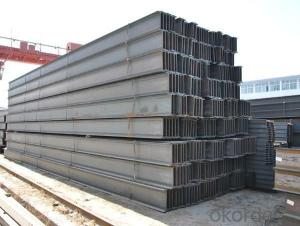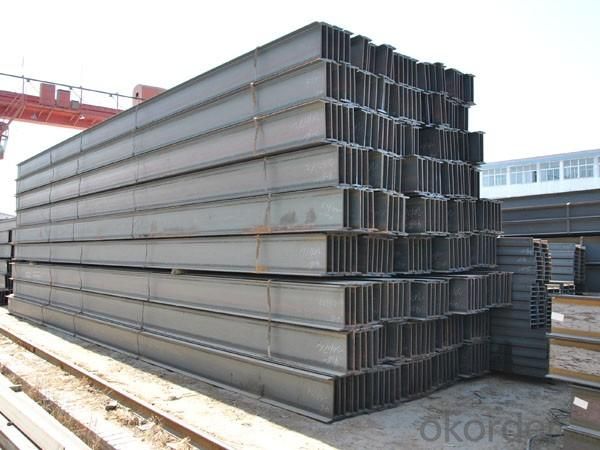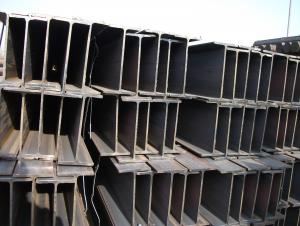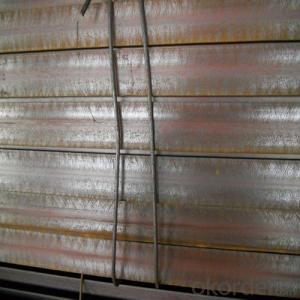Hot Rolled Steel I-Beam Q345
- Loading Port:
- Tianjin
- Payment Terms:
- TT OR LC
- Min Order Qty:
- -
- Supply Capability:
- 200000 m.t./month
OKorder Service Pledge
OKorder Financial Service
You Might Also Like
Specifications of Hot Rolled Steel I-Beam Q345
Standard: ASTM A36, EN10025, JIS, GB, etc.
Grade:S275, S355, SS400, Q235B, A36, Q345, etc
Sizes: 80MM-270MM
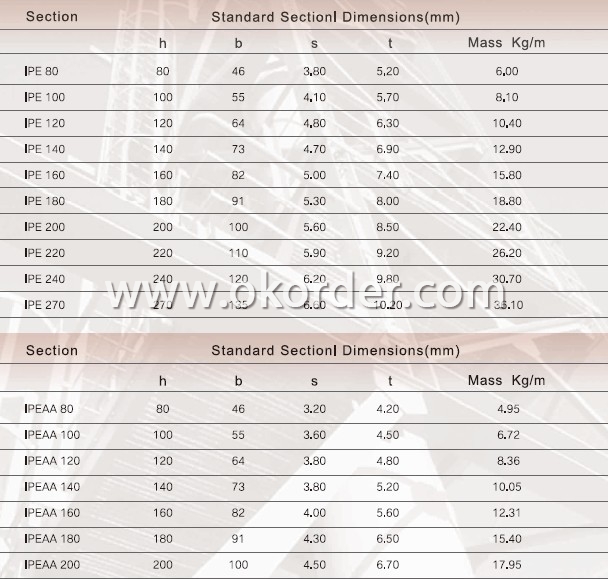
Applications of Hot Rolled Steel I Beam
Hot Rolled Steel I Beam is widely used in various building structures and engineering structures such as roof beams, bridges, transmission towers, hoisting machinery and transport machinery, ships, industrial furnaces, reaction tower, container frame and warehouse etc.
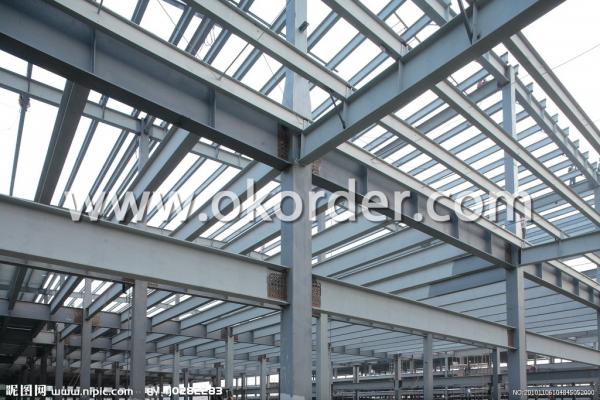
Package & Delivery Terms of Hot Rolled Steel I Beam
1. Package: All the hot rolled steel I beam will be tired by wire rod in bundles
2. Bundle weight: not more than 3.5MT for bulk vessel; less than 3 MT for container load
3. Marks:
Color marking: There will be color marking on both end of the bundle for the cargo delivered by bulk vessel. That makes it easily to distinguish at the destination port.
Tag mark: there will be tag mark tied up on the bundles. The information usually including supplier logo and name, product name, made in China, shipping marks and other information request by the customer.
If loading by container the marking is not needed, but we will prepare it as customer request.
4. Transportation: the goods are delivered by truck from mill to loading port, the maximum quantity can be loaded is around 40MTs by each truck. If the order quantity cannot reach the full truck loaded, the transportation cost per ton will be little higher than full load.
5. Shipment: In containers or in bulk cargo
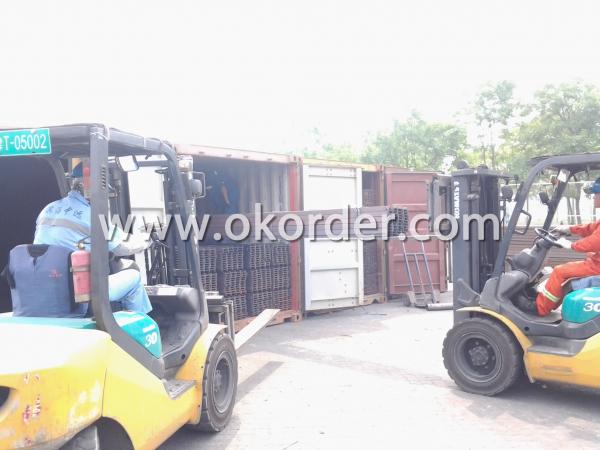
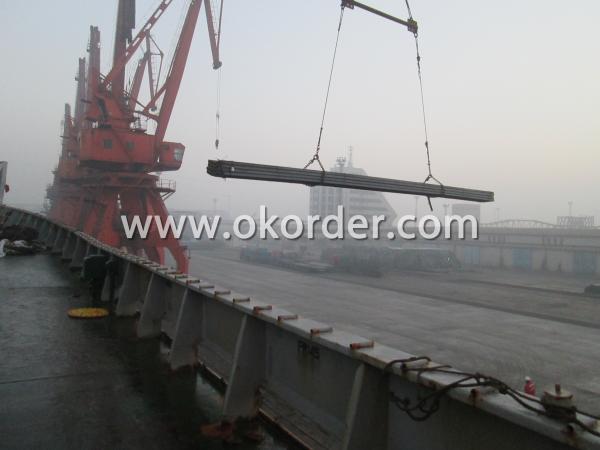
6. Delivery time: All the hot rolled steel I Beam will be at the port of the shipment within 45 days after receiving the L/C at sight ot the advance pyment by T/T
7. Payment: L/C at sight; 30% advance payment before production, 70% before shipment by T/T, etc.
Production flow of Hot Rolled Steel I Beam
Material prepare (billet) —heat up—rough rolling—precision rolling—cooling—packing—storage and transportation
- Q: Are steel angles load-rated?
- Indeed, load-rating is applicable to steel angles. Steel angles serve as structural components widely employed in construction and engineering endeavors. They possess the ability to endure diverse forms of loads, encompassing axial, bending, and shear loads. The load rating of a steel angle pertains to its utmost capacity to sustain a designated load quantity without experiencing any form of failure. Thorough testing and analysis are conducted to ascertain the load ratings for steel angles, taking into account variables such as material properties, geometry, and design criteria. Typically, manufacturers furnish load ratings, which engineers utilize to guarantee the structural soundness and security of a project.
- Q: What's the size of No. 5 angle iron?
- Angle called angle, the steel strip is perpendicular to each other on both sides into the corner. There are equal angles and unequal angles. The two sides of an equal angle steel are equal in width.
- Q: Can steel angles be used in earthquake-resistant construction?
- Yes, steel angles can be used in earthquake-resistant construction. Steel angles are commonly used as structural members in buildings because of their high strength and durability. In earthquake-resistant construction, steel angles can be utilized to provide additional bracing and reinforcement to the building's structural system. By designing and incorporating steel angles in strategic locations, such as at the corners of the building or along the edges of walls, they can help distribute earthquake forces more effectively and reduce the risk of structural failure. Additionally, steel angles can be used to create moment-resisting frames or as part of a steel moment frame system, which is highly effective in resisting lateral forces during an earthquake. Overall, steel angles can play a crucial role in enhancing the seismic performance of a building and can be a valuable component in earthquake-resistant construction.
- Q: How do steel angles contribute to the overall energy efficiency of a building?
- Steel angles contribute to the overall energy efficiency of a building in several ways. Firstly, steel angles are commonly used in the construction of building frames and structures, providing the necessary support and stability. By using steel angles instead of other materials, such as wood or concrete, the building can be constructed with fewer materials and therefore reduce the overall energy consumption during the construction phase. Moreover, steel angles are known for their strength and durability, which allows for longer spans and fewer support columns. This not only maximizes the usable space within the building but also reduces the need for additional heating or cooling systems. By minimizing the number of partitions and obstructions, steel angles enable better airflow and natural lighting, thus reducing the energy required for artificial lighting and ventilation. Additionally, steel angles can be used as a thermal barrier, providing insulation and reducing heat transfer. This helps to maintain a comfortable indoor temperature throughout the year, reducing the reliance on heating and cooling systems and consequently saving energy. Furthermore, steel angles have a high fire resistance, making them a safe choice for building construction. This reduces the need for fireproofing materials and systems, leading to energy savings both during construction and throughout the building's lifespan. Lastly, steel is a highly recyclable material, and steel angles can be recycled at the end of a building's life cycle. By incorporating recycled steel angles into new construction projects, the overall energy consumption and environmental impact can be further reduced. In summary, steel angles contribute to the overall energy efficiency of a building by reducing the amount of materials required during construction, optimizing space utilization, enhancing natural lighting and ventilation, providing thermal insulation, ensuring fire safety, and promoting the use of recyclable materials.
- Q: Can steel angles be used in decorative or architectural applications?
- Yes, steel angles can be used in decorative or architectural applications. Steel angles are versatile and can be shaped and manipulated to create various architectural elements such as decorative trims, ornamental railings, window frames, door frames, and even structural features like support brackets. Additionally, steel angles can be coated or finished in different ways to enhance their aesthetic appeal, such as by painting, powder coating, or patina finishes. Their strength and durability make them suitable for both indoor and outdoor applications, providing structural integrity while also adding a visually appealing element to the design. Overall, steel angles offer a wide range of design possibilities and can be effectively used in decorative or architectural applications.
- Q: Can steel angles be used for solar panel mounting?
- Yes, steel angles can be used for solar panel mounting. Steel angles are commonly used in solar panel mounting systems due to their strength, durability, and flexibility. They provide a sturdy and secure structure to support the weight of the solar panels and withstand environmental conditions such as strong winds and heavy snow loads. Steel angles also allow for easy adjustment and positioning of the solar panels to maximize sunlight exposure. Additionally, steel angles can be easily customized and fabricated to meet specific project requirements, making them a popular choice in the solar industry.
- Q: Are steel angles resistant to chemicals?
- Yes, steel angles are generally resistant to chemicals due to their high durability and corrosion resistance. However, their resistance may vary depending on the specific type of chemical and environment they are exposed to.
- Q: How do you calculate the deflection of a loaded steel angle?
- To calculate the deflection of a loaded steel angle, you need to consider several factors and apply the principles of structural engineering. Here is a step-by-step guide on how to do it: 1. Determine the load: First, you need to know the magnitude and distribution of the load applied to the steel angle. This could be a point load, uniformly distributed load, or a combination of both. 2. Identify the properties of the steel angle: Obtain the dimensions and material properties of the steel angle. This includes the length, width, thickness, and the modulus of elasticity (E) for the steel material. The modulus of elasticity represents the stiffness of the material. 3. Determine the support conditions: Assess how the steel angle is supported. This could be simply supported at both ends, fixed at one end, or a combination of fixed and simply supported conditions. Different support conditions will yield different deflection formulas. 4. Select an appropriate deflection formula: Depending on the load and support conditions, choose the relevant deflection formula from a reference source such as a structural engineering handbook. There are various formulas available, including those specifically designed for angles subjected to bending. 5. Plug in the values: Substitute the known values, such as load magnitude, angle dimensions, and material properties, into the selected deflection formula. Ensure that the units are consistent. 6. Solve for deflection: Perform the necessary calculations to determine the deflection of the loaded steel angle. The result will be in units of length (e.g., inches or millimeters). 7. Verify the deflection: If possible, compare the calculated deflection with the allowable deflection specified in relevant design codes or standards. This will help ensure that the angle is not deflecting beyond acceptable limits. Remember, calculating the deflection of a loaded steel angle is an engineering task that requires knowledge of structural principles and the use of appropriate formulas. If you are unsure or dealing with complex scenarios, it is recommended to consult a professional structural engineer for accurate and reliable calculations.
- Q: Are steel angles resistant to earthquakes?
- Seismic-resistant construction can be achieved by utilizing steel angles, which possess high strength and ductility, making them suitable for this purpose. Often referred to as steel L-shaped beams, these steel angles are commonly employed in structural applications to provide support and reinforcement. During an earthquake, the utilization of steel angles aids in the even distribution of seismic forces throughout the structure, thereby reducing the occurrence of concentrated stress points. The L-shape design of these steel angles allows them to effectively resist bending and twisting forces, which are frequently encountered during seismic events. Moreover, steel angles can be interconnected and welded together to establish a rigid frame system, thereby enhancing their capability to withstand seismic forces. Such a system effectively absorbs and dissipates energy resulting from vibrations caused by earthquakes, ultimately minimizing any potential damage inflicted upon the structure. Nevertheless, it is crucial to acknowledge that the overall seismic resistance of a structure is contingent upon several factors, including its design, construction methods, and adherence to building codes and regulations. While steel angles alone cannot ensure complete protection against earthquakes, their integration into a well-designed seismic-resistant system significantly augments the structure's capacity to withstand seismic forces.
- Q: How are steel angles used in framing?
- Steel angles are commonly used in framing to provide structural support and stability. They are typically used to connect and reinforce various components of a frame, such as beams, columns, and trusses. Steel angles are often bolted or welded at specific locations to create a rigid framework that can withstand loads and distribute them evenly. This helps ensure the overall strength and integrity of the framed structure.
Send your message to us
Hot Rolled Steel I-Beam Q345
- Loading Port:
- Tianjin
- Payment Terms:
- TT OR LC
- Min Order Qty:
- -
- Supply Capability:
- 200000 m.t./month
OKorder Service Pledge
OKorder Financial Service
Similar products
Hot products
Hot Searches
Related keywords
